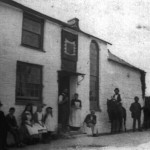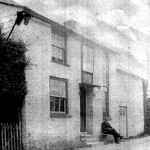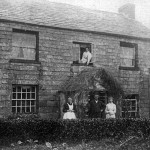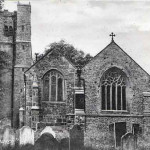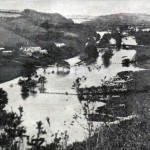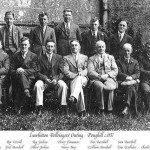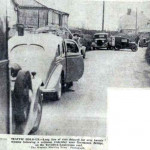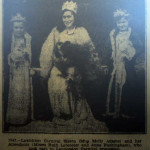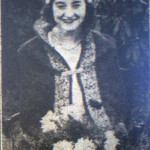.
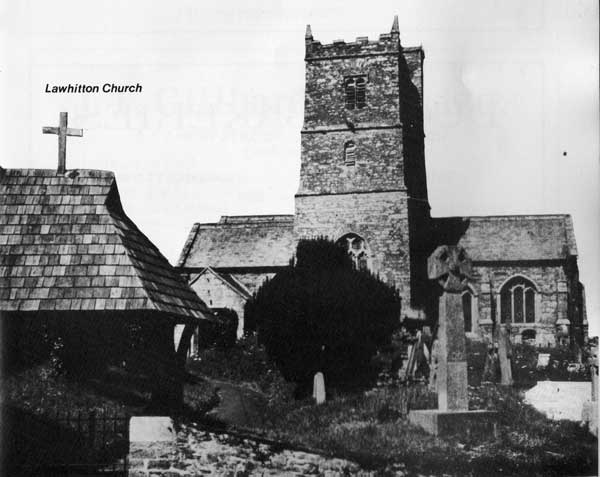
Lawhitton is a civil parish and village in east Cornwall. The village is situated two miles southwest of Launceston and half-a-mile west of Cornwall’s border with Devon at the River Tamar. The parish of Lawhitton is in the Launceston registration district. It is a comparatively small parish and Lawhitton village is the principal settlement. The border with Devon forms the parish’s eastern boundary; to the north, it is bounded by St Thomas by Launceston parish; to the west by Launceston parish; and to the south by Lezant parish.
This parish derives its appellation from an appearance which its church probably formerly suggested; Lawhitton in the ancient Cornish dialect signifying the white church. The manor of Lawhitton was, with two others, all bearing the name of Lanwithau, given by Edward the elder about the year 905, to the Bishop of Kirton, from whom, on the union of sees, it passed to the Bishop of Exeter. There was formerly a Wednesday market at Lawhitton, granted, in 1312, to the Bishop of Exeter, with a fair at the festival of St. Michael, both long ago discontinued. Rev. Charles Marshall, built the parsonage house at Lawhitton, in 1801. In the church is a memorial for Richard Bennet, Esq. dated 1619, and a monument of artificial stone to the memory of Richard Coffin, who died in 1786. This gentleman, who was the last male heir of the Bennet family, took the name of Coffin from his mother, who was heiress of the Coffins of Portlege.
Within the parish lay three separate non-conformist chapels. The first is at Southern Comfort, Tregada (the hamlet is split between Lawhitton, Lezant and South Petherwin) which was built as a Wesleyan chapel and dates back to the 1850’s. It was enlarged in 1875 to a design by Launceston architect Charles Wise. It became known as Tregada Methodist Church from 1932. It had its own burial ground from at least the 1850s. It closed in 1993 and the building was sold. It was part of Launceston Methodist Circuit.
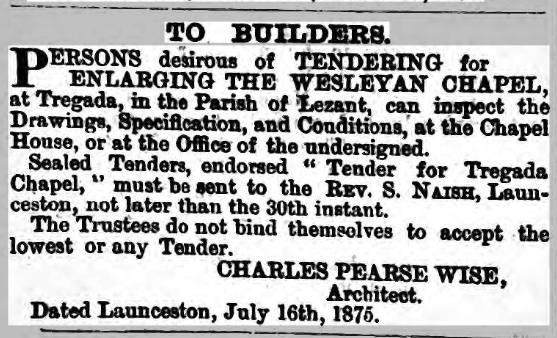
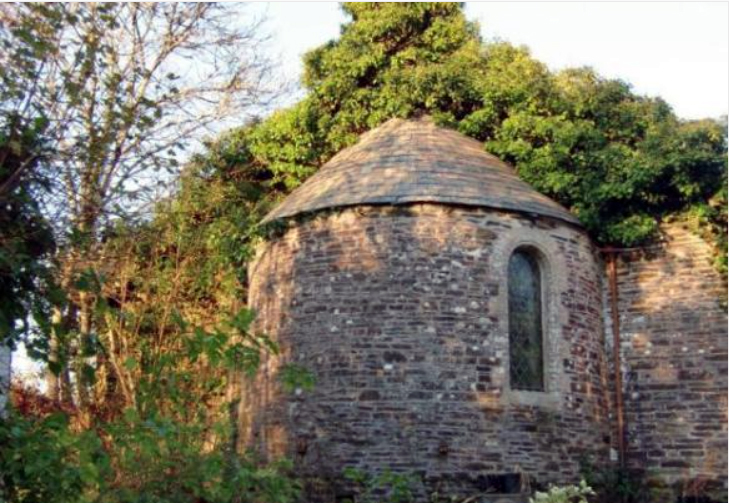
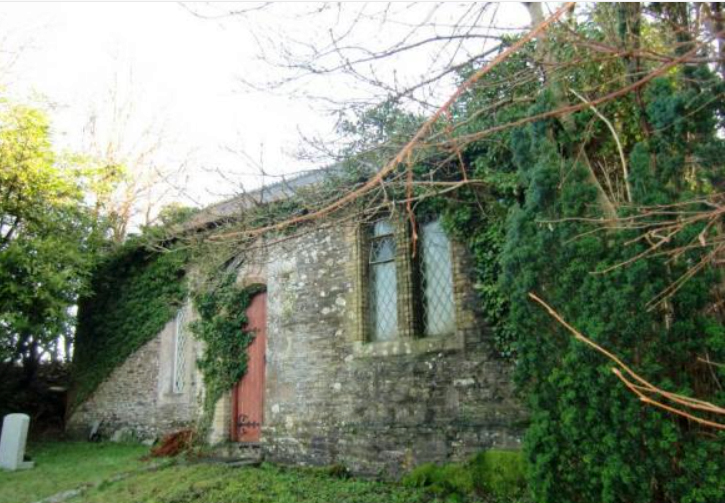
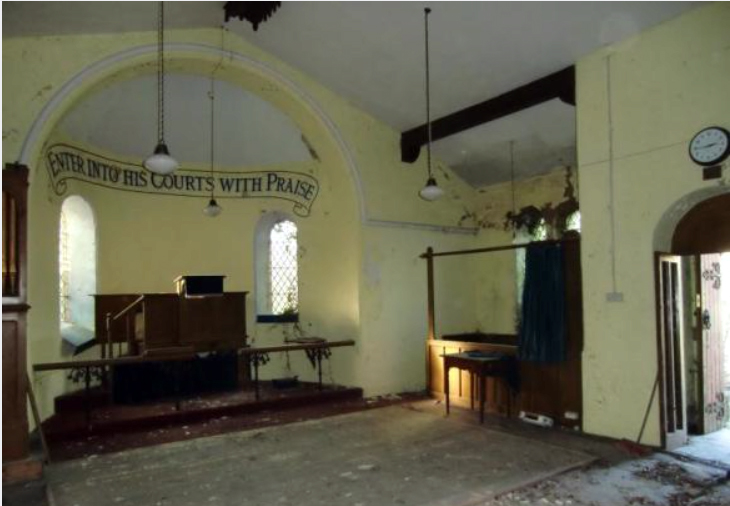
The second chapel was for the Baptist’s at Greystone built in 1861 and a third at Carzantic from around the same date.
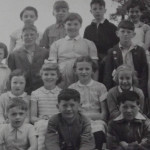
 In thankful remembrance of the men of
In thankful remembrance of the men of
Lawhitton who gave their lives in the Great War
1914-1918
Thomas Coombe William Martin
William Thomas Edgar Vosper
1939-1945
Robert Wevill
.
.
Lawhitton’s Fallen from World War One
Thomas Coombe
Thomas was born on the 17th of May 1895 to John and Betsy Coombe in Lawhitton Village. His Father was a Carpenter. On leaving school, Thomas went to work for Mr. Thomas Weeks at Sheers Barton, Lawhitton as a Farm Labourer. On the 23rd of February 1914 he joined the Royal Navy as a 2nd Class Stoker (Service No. K.22023) for a 12 year service period. On the 30th of July he was posted to ‘HMS Monmouth’.
Thomas drowned when the Monmouth was sunk at the Battle of Coronel with no survivors on the 1st of November 1914. His body was never recovered.
HMS Monmouth and HMS Good Hope; Monmouth was the lead ship of a class of armoured cruisers of 9,800 tons. They were sunk in the Battle of Coronel in 1914. Built in 1901; armed with 14 – 6 inch quick-firing guns – served in the China Station 1906-1913; sent to Reserve Fleet in January 1914: sent to 4th Cruiser Squadron (West Indian Squadron – Admiral Christopher Cradock. The Battle of Coronel, off the coast of Chile, 1 November, 1914; outdated, inexperienced crew, quickly overwhelmed, Monmouth was hit by a *.2 inch shell from SMS Gneisenau, which penetrated the thin armour of the forward gun-turret causing a huge fire and great damage forward; more serious hits and put out of action. The Gneisenau then turned its attention to the Good Hope. The Monmouth was then attacked by the newly arrived light cruiser SMS Nurmberg (Kapitan zur See Karl von Schonberg) which fired seventy-five 4.1 inch shells at close range. Monmouth and Good Hope were both sunk with a combined loss of 1,570 lives. No survivors from either ship. {Jim Edwards}.
His name is commemorated on the Plymouth Naval Memorial and on the Lawhitton War Memorial.
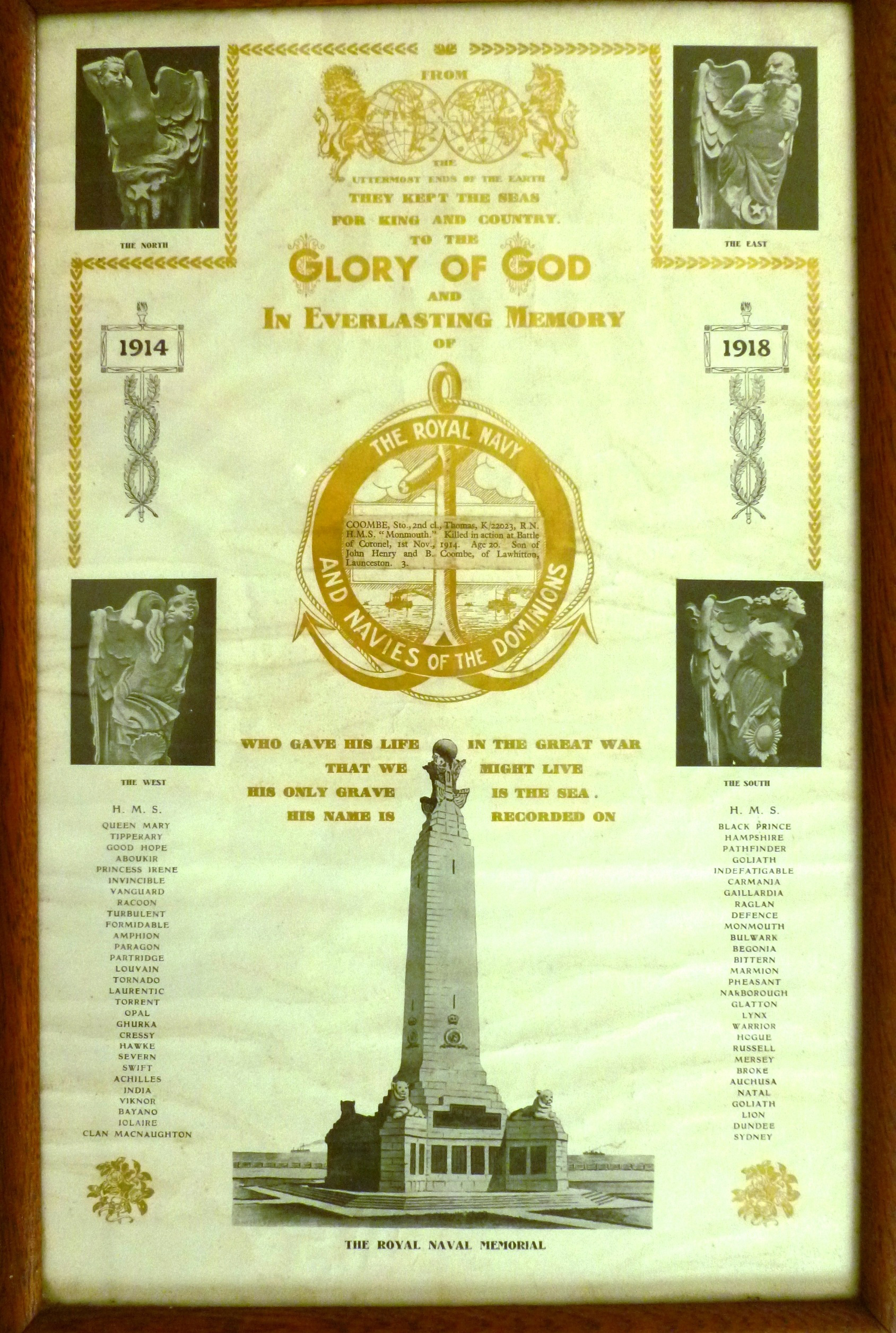
William Earle MARTIN
William was born in 1880 at Wishworthy, Lawhitton, Launceston to Elizabeth Martin. There is no information prior to the 1901 census so there are no details on his Father except that he had died prior to 1901. William worked on the family farm at Wishworthy from leaving school. He first joined the Suffolk Regiment (Regimental No 28956) enlisting at Torquay in December 1915 , but transferred to The Royal Engineers Pioneer Corps (Regimental No 358567) serving with the 9th Foreway Company. His company was responsible for the laying of tram/roadways. He died of his wounds on May 1st, 1918 sustained in action on April 18th. His grave is not known but his name is commemorated on the Lawhitton and Launceston War Memorials. At the time of his death his mother was living at 4, Monks Park, Ridgegrove, Launceston.
The rank of Pioneer was introduced in the Royal Engineers in 1913 owing to a shortage of tradesmen. During WW1 Pioneers in the RE might be trained only in basic field engineering (or combat engineering as it is now known).
William John Thomas
William was born in 1894 to Alfred and Bessie Thomas at 2 Greystone Bridge Cottage Dunterton, Devon. His Father was a Stone Quarryman, possibly at Greystone Quarry, and trade that William took up on leaving school. In 1911 the family were living at Gaddiford, Lawhitton. He enlisted at Launceston with the Duke of Cornwall’s Light Infantry (Regimental No. 23493) serving with the 1st Battalion. He was killed in action on the 4th of October 1917. His resting place is unknown but his name is commemorated on the Lawhitton War Memorial. At the time of his death his parents were living at Gaddaford, Lawhitton, Launceston.
Edgar VOSPER
Edgar was born in 1893 to Charles and Emma Vosper at Banham, Launceston. His Father was a farmer and Butcher which was a trade that Edgar took up on leaving school. He joined the Royal 1st Devon Yeomanry (Hussars) as a Private (Regimental No. 2486). He died of dysentery in Egypt on the 2nd of November 1915. He is buried at the Alexandria (Chatby) Military Cemetery, Alexandria Al Iskandariyah, Egypt, Plot: B. 133.
Lawhitton’s Fallen from World War Two
Sydney Robert Wevill
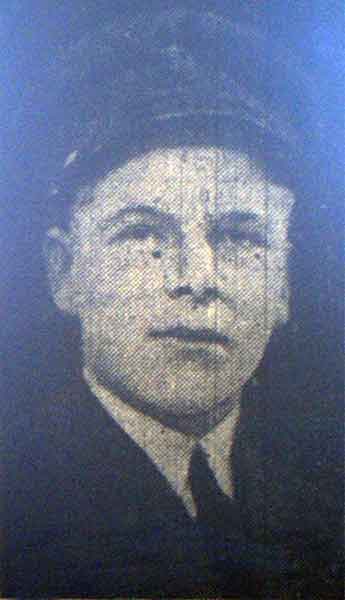
Sydney was born in 1924 to Frederick and Edith Wevill at the Village, Lawhitton. Bob as he was known, after leaving school served his apprenticeship at Messrs. Prouts Garage, Launceston. Before the war he was a regular bell ringer at Lawhitton church. He was a member of the A.T.C. and also the Lawhitton Homeguard before he joined up with the Royal Navy in 1942 as a Leading Motor Mechanic (Service No. P/MX 98286). He was wounded whilst serving aboard the ‘HM Motor Torpedo Boat 439’ just off the Dutch coast in the autumn of 1943. (The boat along with others was on an anti E Boat patrol to seaward of the east coast convoy route.) He was taken to hospital in Uxbridge but died of his wounds on the 27th of January 1944 at the age of 20. He was buried a week later at Lawhitton parish church.
Extracts from the Cornish and Devon Post during World War One years compiled by Jim Edwards.
Post & News, October 10th 1914: Experiences of the Chaplain of HMS Cressy; Rev. George Collier.
Last week Rev. George H Collier, MA., assistant curate All Saints, Babbacombe, was married to Miss Langdon, daughter of Mr and Mrs Langdon, of Kensey, Launceston.
Lawhitton: Edgar Vosper, of Bamham, at Gallipoli, died of dysentery. Thomas Coombe drowned on the HMS Monmouth.
Trigg Major Ruridecanal Magazine:
Vicar of Lawhitton reading a letter: 13 Nov 1914:– “On behalf of the 67 wounded soldiers, both British and Belgian, now in this hospital, I have great pleasure in sending their grateful thanks to the parishioners of Lawhitton for the most generous contributions sent for their benefit, consisting of 10 lbs of butter, 63 eggs, 7 fowls, a cake, and a good quantity of apples and pears, all of which have arrived safely this morning. In addition to this, I also thankfully acknowledge the receipt of £1. 2s. 10d, in money. : Sydney M Quannel, Secretary.
December 1914 – Lawhitton: Thomas Coombes is the first of the Lawhitton contingent of His Majesty’ Forces to obtain a place on the highest “Roll of Honour” – the Roll which receives the names of those who have given their lives for their King & Country. We have a few details of the Naval battle in which the “Monmouth” [Thomas Coombe’s ship] and the “Good Hope” were sunk. All we know is that they were outclassed by the German Squadron, and that their crews fought bravely, as British sailors would, to the last.
Vicar of Lawhitton reading a letter: 13 Nov 1914:– “On behalf of the 67 wounded soldiers, both British and Belgian, now in this hospital, I have great pleasure in sending their grateful thanks to the parishioners of Lawhitton for the most generous contributions sent for their benefit, consisting of 10 lbs of butter, 63 eggs, 7 fowls, a cake, and a good quantity of apples and pears, all of which have arrived safely this morning. In addition to this, I also thankfully acknowledge the receipt of £1. 2s. 10d, in money. : Sydney M Quannel, Secretary.
St Mary Magdalene: December 1915: Lawhitton. Edgar Vosper, of Bamham, died of dysentery at Gallipoli. Thomas Coombe, of Lawhitton, was drowned when his ship was torpedoed.
Lawhitton, February 1916. A very pretty wedding was solemnised on Tuesday 17th January, between Driver Alfred Lane and Miss Beatrice Anne Lewis. The bridegroom, who enlisted at the commencement of war, had only seven days leave from France.
Lawhitton, August 1916: On Wednesday, 19th July, the marriage was solemnised between Bombardier Harry Bray and Miss Ethel Lane.
Lawhitton, January 1917: Lawhitton Working Party: A sum of £9. 15s. 2d. was collected in the parish this Autumn, for material which our workers have made into comforts to service men in hospitals and in the trenches. With the addition of gifts from other in the parish who supplied their own materials, we were able to send to Mrs Davey, on December 5th:- 12 shirts; 12 bed jackets; 11 waistcoats; 126 handkerchiefs; 50 trouser’ bags; 24 knitted washers; 22 pairs socks; 18 pairs bed stockings; 26 mufflers; 8 pairs mittens; 7 pairs cuffs. Acknowledgements for these have been received as follows: from the Hon. Lady Hawley, Hon. Sec. Queen Mary’s Needlework Guild, Friary Court, St James Palace, Dec. 11th. 1916:- “I am commanded by Her Majesty to convey to you the expression of her high appreciation of your generosity, and to thank you for the splendid gift which you have been so good as to send to the G.M.N.G.”
From the Hon. Sec. Holyrood Needlework Guild, Falmouth: “We sent all your woolies by post direct to France for the men in the trenches.” December 12th, 1916.
Lawhitton, May 1917: Two members of our choir who have ‘joined up’ – Harry Bray and Willie Martin, have been laid in hospital. We have good reports on them.
Lawhitton, August 1917: “But yesterday unknown to fame.” Lawhitton today proudly lifts her head. For has not an honour been thrust upon her through the person of one of her sons, Major Frederick Sparke Pyne, RFA. – the coveted honour of ‘Distinguished Service Order.’
Major Pyne has been twice wounded, has been in the fire front of battle since October 1st, 1914 – then only a Subaltern, now a Major. Our congratulations to him and his wife, and to all at Ercildoun, and very heartily do we wish him God speed in his career.
Lawhitton, October 1917: Since our last notice appeared in the magazine, the parish has suffered a heavy loss through the death of Mr Charles Vosper of Bamham.
Burial: August 2nd. 1917: Mr Charles Vosper, Bamham, aged 64
Lawhitton, November 1917: The Rev. JJ Haworth has kindly promised to address the Members of the Mother’s Union in Church on Wednesday the 21st November, at 3 pm. We hope all members will make a note of the day and hour, and will try to be present.
Lawhitton, May 1918: On Monday, in Easter Week, the marriage of Mr J Symons to Miss Jessie Doney took place at Torpoint, and on Wednesday in Easter Week Miss M J Coumbe was married to Gunner WJ Wright in our church. We wish both couples every happiness.
Lawhitton, June 1918: Another name must be added to our Roll of Honour – Pte William Martin, of the Pioneers, was severely wounded in France, on 19th of April, and died in hospital on 1st May.
Visits: 399

